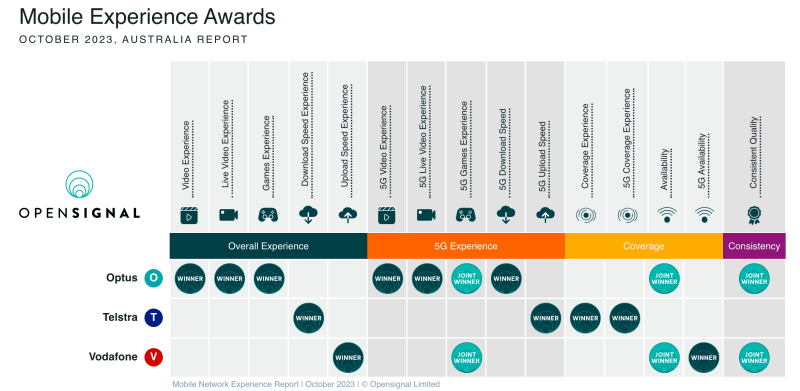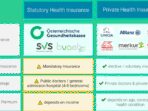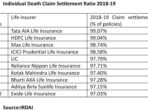Home Insurance Market Share Australia – The UK Insurance Insurance Review is fragmented with coverage (building insurance, content insurance and combined buildings and content insurance), distribution channel (direct, brokers/agents, banks and more) and by format (new and rehabilitated) In all of the above sections of market size and forecasts for UK housing insurance Basil (USD) are offered.
Compare market size and development of the British insurance market with other markets in the Financial Services and Investment Information Industry
Home Insurance Market Share Australia

It is estimated that the UK insurance market is $ 7.16 billion in 2025 and is expected to reach $ 8.03 billion by 2030, with CAGR was 2.31% (2025-2030) during the forecast period.
Top 10 Largest Home Insurance Providers In The Us
The British Housing Insurance Landscape faces significant transformation, facilitated by technological development and changing wishes of consumers. Insurance providers are increasingly using Insurtech digital platforms and solutions to improve customer experience and improve functions. This digital development has led to an increase in the electronic insurance market at home, with significant importance on the market. According to the industry, insurance bodies will process real estate insurance claims with a total of £ 16 million, dividing the same way between residential and commercial requirements, presenting a significant amount of industry activities.
Price prices continue to create a dynamic of the insurance market market, and bonus rates are closely linked to housing market fluctuations. The average housing price in January 2022 has reached about £ 274,000, which is a significant increase compared to the previous year and has a direct impact on the calculation of the premium. Insurance providers responded by offering more flexible roadway options and average household insurance coverage costs £ 141, while individual content insurance and content insurance on average £ 228 and £ 116 per year.
Regional differences in home insurance cover both challenges and opportunities for market participants. Northern Ireland manages a content of content with 82% of houses, while London is important behind 55%, highlighting an important place for market distribution in cities. These changes to the coverage level have prompted insurers to develop targeted strategies for various areas and some service providers offer specialized urban properties, while others focus on a comprehensive coating on suburban and rural areas.
The market is a witness to the structural change of distribution channels and traditional and digital platforms coexist to serve different customer wishes. Increasing custom coating systems for specific needs of homeowners, especially high -value items, is a growing trend in the market. The industry maintains strong management, adopting over 80% of home insurance requirements, reflecting advanced risk rating options and customer service standards. This high level of acceptance has contributed to increased consumer confidence in insurance products, market development and customer maintenance levels.
How Is Climate Change Impacting Homeowners Insurance In Your State?
The UK insurance market has significant differences in regional distribution rates, creating significant growth opportunities for insurers in various areas. Northern Ireland manages the highest insurance coverage of 82%of houses, while other areas, such as southeast (81%), southwestern, eastern England, Yorkshire and Hamber and Wales maintained a similar level of coating of about 78%. This regional difference, especially in the cities, such as London, where only 55% of the houses have content coating, provides insurers with unused market potential in areas that have been served.
Low distribution levels in areas such as northeast, Scotland, northwest and West Midland show an important part of market expansion. Insurance providers can use these opportunities to develop targeted marketing strategies and custom products in these areas. The coating levels also reflect different risk perceptions and economic conditions in the areas, allowing insurers to adapt their bids based on specific regional needs and characteristics. This regional diversity in the adoption of insurance creates a natural market for market development through concentrated geographical expansion and development of custom products.
The permanent development of occupied households in the UK has become an important insurance market for homeowners. By 2021, the occupied owners’ households have represented about 65% of all households, which were about 15.5 million households. This trend is particularly important for insurers, as homeowners usually choose a comprehensive insurance coverage, including construction and content insurance, compared to tenants who may only require content insurance.

The growing percentage of households occupied by owners has a direct impact on the strategies of insurance development and marketing. These homeowners usually look for a combined home protection policy that provides a more complete overlay and often creates higher high quality prices for insurers. This trend also affects the type of sidewalk they are looking for, as homeowners usually need more protection for both building blocks and content, resulting in higher insurance rates in this area. This change of home -owned model creates the ability of insurers to develop more complex and integrated insurance products tailored to the special needs of homeowners and risk profiles.
Home Insurance Premiums Are Up 56pc, But Insurers Are Making A Loss
The digital conversion of the UK insurance market has changed the way they buy and manage policies and electronic channels are increasingly dominated by policy distribution. The industry is a witness to a major change and forecasts show that the £ 4.8 billion, which is currently being carried out with traditional channels, will be arrested by insurers offering digital distribution experience. This conversion exceeds only policy markets, including digital requirements, policy management and customer service interaction, making insurance products more accessible and user -friendly.
The integration of Smart Home Technologies has become an important factor in future home protection, with 49% of British residents buying at least one smart device from March to December 2020. Smart devices such as tobacco alarms, cameras And leakage detectors are increasingly used to reduce bonuses and improve risk management. This technological integration allows insurers to offer a more personalized policy based on real -time data and risk assessment, while providing homeowners to actively prevent and reduce possible losses. The adoption of these technologies not only improves risk assessment options for insurers, but also creates opportunities for innovative insurance and price models based on actual use and risk models.
Content construction and insurance dominate the British insurance market, which runs about 70% of the market share in 2024, making it the largest and fastest growing department. This combined insurance option has gained a significant attraction between British homeowners, as it provides comprehensive coverage for both structural and personal real estate according to a policy. The popularity of the department is facilitated by its profitability compared to the acquisition of individual policies and the average savings for customers is about £ 27 per year. Insurance providers are increasingly promoting this combination of sidewalks through various distribution channels, especially on online platforms and banking partnerships to benefit from the growing selection of consumers of integrated solutions. The development of the department is further supported by the growing values of the real estate and the increasing understanding of homeowners about the benefits of providing a comprehensive residential home.
The British insurance market includes a number of other specialized sections that provide different types of customers and real estate. Insurance construction serves as an independent opportunity for those looking for coverage, especially with regard to structural data, while content insurance provides concentrated protection of personal property. The tenant’s or tenant’s insurance sector examines the unique needs of the growing rental market, offering custom coverage for tenants. Reception insurance provides specialized coverage for property owners renting their ownership, including additional protection, such as income loss and liability. The Strati/Holiday Home Insurance Department serves the specialized market of owners of holiday owners and those with joint property measures, offering special real estate coverage, which may have been not occupied for a long time.
Quarterly Private Health Insurance Statistics
Banking and building associations continue to dominate the British landscape of home insurance, with about 26% market share in 2024. The power of this channel comes from its close integration with the mortgage agreement and the established relationship with customers. The department benefits from the United Kingdom, which has one of the largest mortgage markets worldwide, with more than 11 million mortgages worth about 1.3 trillion kilos. Larger banking authorities, such as HSBC, Barclays, Scotland Royal Bank and Lloyds Banking Group, use their wide customer base and branches to sell home insurance products. Digital integration and innovative partnerships, such as the Direct Line Group, have further improved the effectiveness of this channel, approaching customers through mobile bank and digital market platforms.
The electronic channel section hosts a quick transformation into the British home insurance market and 2024-2029. The expected growth rate of about 4%. This development is facilitated by the increasing digital introduction of consumers and the increasing popularity of the price comparison. Insurance providers are largely investing in digital capabilities and Insurtech solutions to improve customer participation and offer more competitive, custom prices. The expansion of the department is further supported by the emergence of digital first insurance providers and the integration of artificial intelligence algorithms, which allows you to adapt policy faster and process the requirements. Price comparisons such as moneySupermarket.com, gocompare.com and comparethemarket.com continue to play a decisive role in managing sales online insurance.
There are many other important distribution channels in the British residence insurance market, including direct sales, independent consultants, utilities/retailers/affinity groups and companies. Immediate channels benefit from the investment of insurers in customer service and brand recognition, while independent consultants provide specialized skills and personalized services. The Utilities/Retail/Affiliate Sale sector uses existing relationships with customers and dedication programs to provide insurance products. The company’s agents, although representing a smaller part, maintain their compliance through specialized knowledge and established relationships with customers. Each of these channels serves different wishes and needs of customers,







